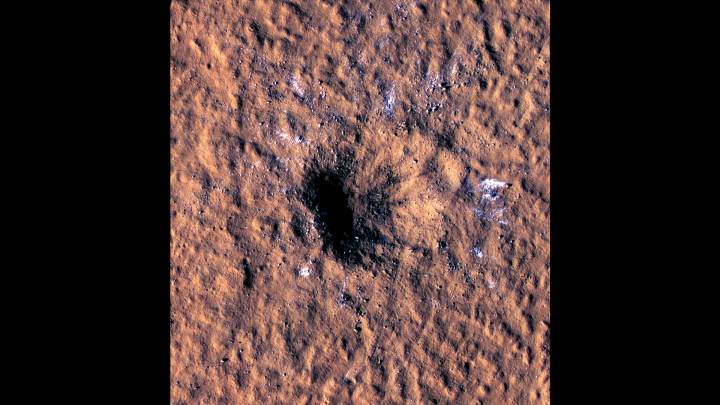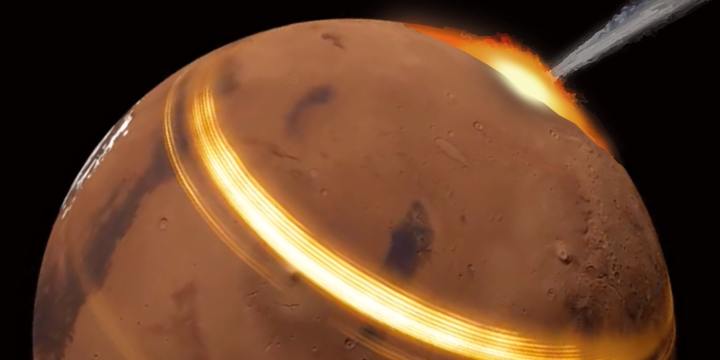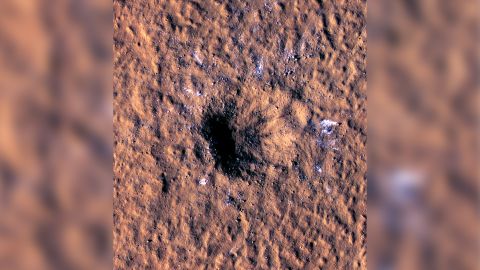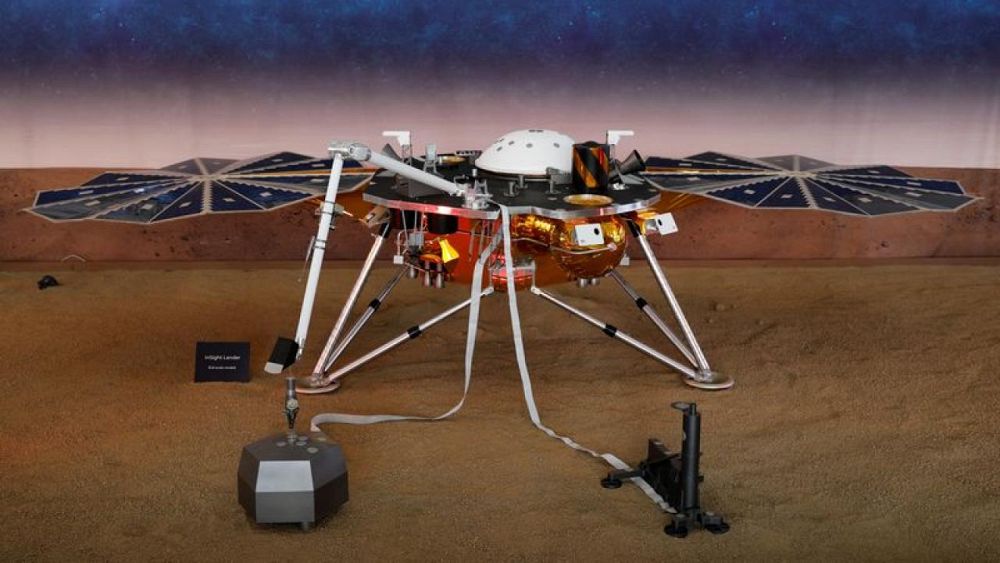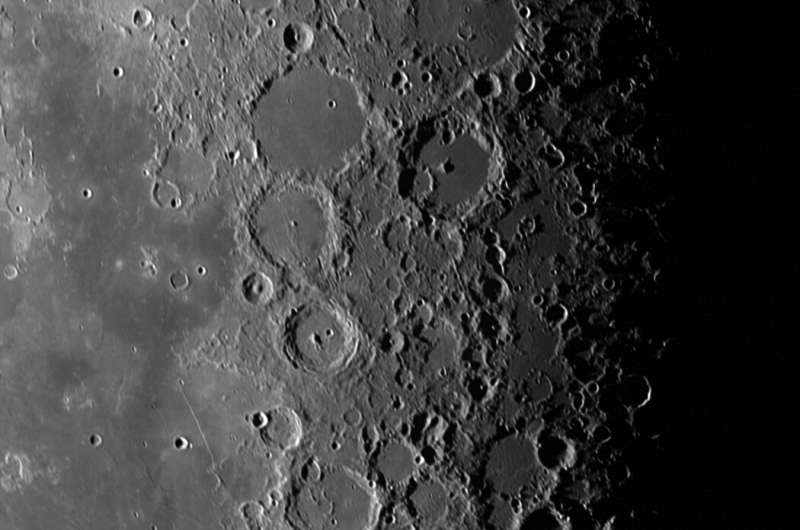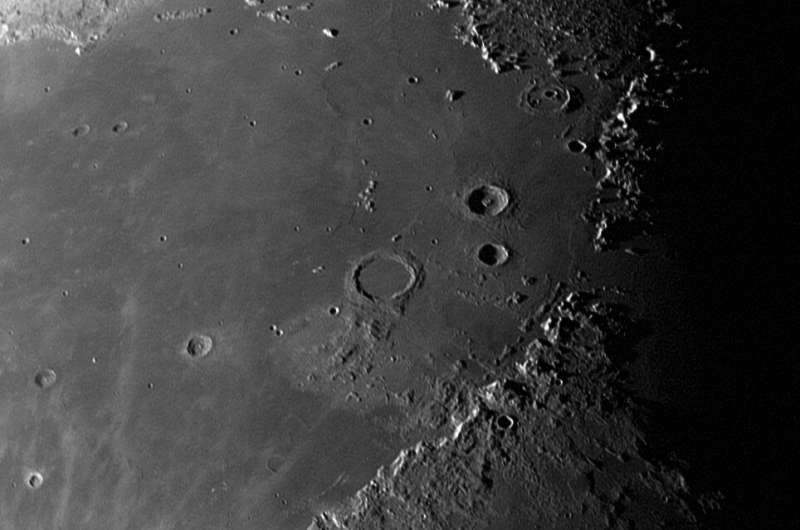The growing role Canada plays in space exploration and innovation is being discussed in London, Ont. this week.
Academics, industry leaders and students are among those taking part in the Space as a National Asset for Canada Conference (SNAC).
The event features a wide range of out-of-this-world topics which stretch beyond rockets, satellites and deep space telescopes.
Participants are also discussing Canada’s role in space from ethical and medical perspectives while debating everything from space junk to space food.
“This conference is really the first time in Canada we have a space-focussed conference when everyone from the field can come together and exchange information,” said Denis Vida, a postdoctoral associate of meteor physics at Western University.
The conference began with Lisa Campbell, the President of the Canadian Space Agency. Remotely she shared her excitement about Canada’s supporting role in the upcoming Artemis moon mission and its planned lunar station.
“We’re in the design phase of the Canadarm3, our A.I.-enabled space-robotic system that Canada is contributing to the lunar gateway, a new space station that will orbit the moon,” Campbell revealed.
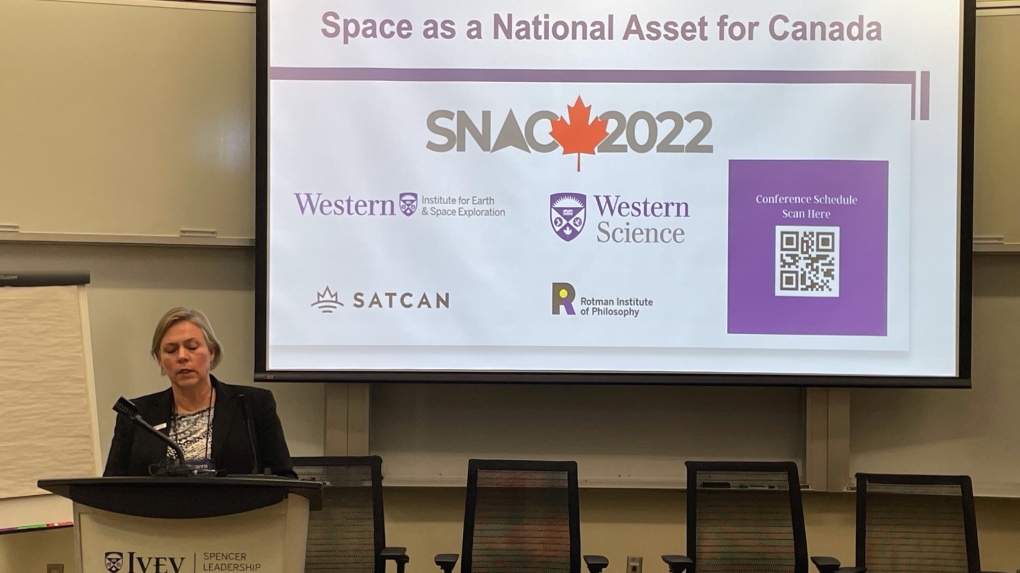 President of the Canadian Space Agency Lisa Campbell speaks at the Space as a National Asset for Canada Conference in London, Ont. on Oct. 31, 2022. (Sean Irvine/CTV News London)Astronaut Jeremy Hansen, slated to be part of Artemis II is also addressing the conference.
President of the Canadian Space Agency Lisa Campbell speaks at the Space as a National Asset for Canada Conference in London, Ont. on Oct. 31, 2022. (Sean Irvine/CTV News London)Astronaut Jeremy Hansen, slated to be part of Artemis II is also addressing the conference.
.“There is going to be a Canadian astronaut on the moon for the first time, which is absolutely bonkers!” said Vida.
But as Canada’s space industry looks to grow on the world stage, it faces a challenge in recruiting.
Campbell confirms just 28 per cent of the Canadian space workforce consists of women.
Diversity is also a challenge.
That’s why Western’s Institute for Earth & Space exploration (also known as Western Space) is working to broaden the definition of space work to include multiple fields.
“It’s engineers, it’s medical students, it’s astronomy students, planetary science students,” said Sarah Gallagher, the director of Western Space.
Yet in a time of geopolitical uncertainty on earth, Vida believes Canada is well positioned to provide a safe place for space research.
“Canada is right in the middle of it. So it is really good to be a Canadian student and a young researcher in Canada because we have access to both European and American science projects," Vida concluded.
The SNAC conference runs through Tuesday.
https://news.google.com/__i/rss/rd/articles/CBMiS2h0dHBzOi8vbG9uZG9uLmN0dm5ld3MuY2EvY2FuYWRhLXMtc3BhY2UtbWluZHMtbWVldC1pbi1sb25kb24tb250LTEuNjEzMjQyMtIBAA?oc=5
2022-10-31 17:13:00Z
1633154081













